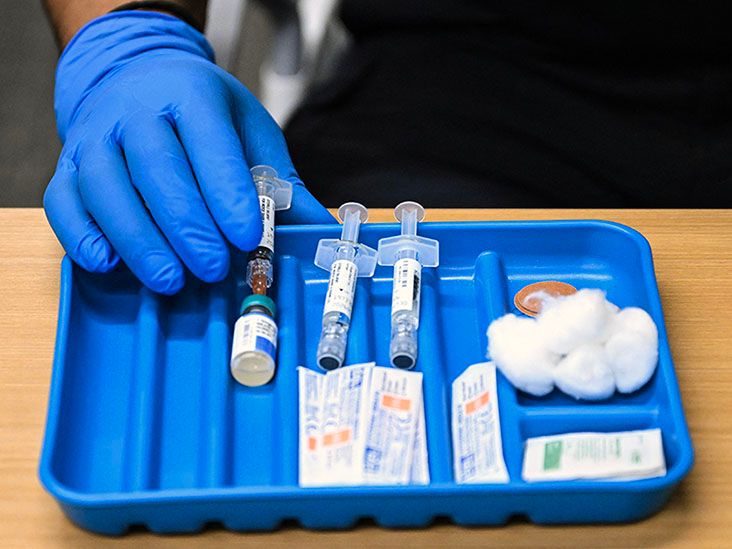The Opioid Risk Tool (ORT) is a self-reported questionnaire that doctors can use to assess a person’s potential risk of opioid use disorder before prescribing pain medication.
Content warning
This feature mentions experiences of trauma and sexual abuse. Please read at your own discretion.
Opioids are a class of drugs that doctors often prescribe to relieve pain. Examples of prescription opioids include oxycodone, hydromorphone, morphine and the combination drug hydrocodone/acetaminophen.
While these medications can be highly effective for pain relief, they can also be highly addictive, especially for people with certain risk factors.
Once a person has developed opioid use disorder (OUD) and regularly misuses opioids, stopping that use can lead to withdrawal symptoms. For this reason, treatment with these drugs can be complex.
Tools such as the ORT can help doctors determine whether a person may have an increased risk of developing OUD. Doctors can then recommend that those with a higher risk use non-opioid pain relievers rather than opioids for ongoing pain.

The ORT is a self-reported five-question questionnaire that helps doctors assess a person’s risk of developing OUD. Lynn Webster and Rebecca Webster developed the tool in 2005 based on a review of medical literature and on the authors’ personal experiences.
This tool is
- Brief Risk Interview (BRI)
- Brief Risk Questionnaire (BRQ)
- Current Opioid Misuse Measure (COMM)
- Patient Medication Questionnaire (PMQ)
The ORT uses known risk factors for opioid use to assess individual risk.
A doctor will use the ORT to assess the risk of OUD before prescribing pain medication for chronic, noncancerous conditions. The questionnaire has
Each factor has a different weighting, and the original tool assigned different scores to male and female participants for some questions. When showing the maximum scores for sex differences below, the first number is the female score, while the second is the male score.
The factors and their maximum scores are as follows:
- a family history of substance abuse: alcohol (1 or 3), illegal drugs (2 or 3), or prescription drugs (4)
- a personal history of substance abuse: alcohol (3), illegal drugs (4), or prescription drugs (5)
- age range of 16 to 45 years (1)
- a history of preadolescent sexual abuse (3 or 0)
- a personal history of psychological disease: attention deficit hyperactivity disorder (ADHD) (2), obsessive-compulsive disorder (OCD) (2), bipolar disorder (2), schizophrenia (2), or depression (1)
The doctor then adds the scores in a person’s responses to create a risk score, which implies the following:
- 3 or lower: The person has a low risk of OUD.
- 4 to 7: The person has a moderate risk of OUD.
- 8 or higher: The person has a high risk of OUD.
The ORT may vary slightly depending on a person’s sex. For a female participant, the tool takes the following form:
| Age 16 to 45 years | +1 |
| Family history of substance abuse | |
| Alcohol | +1 |
| Illegal drugs | +2 |
| Prescription drugs | +4 |
| Personal history of substance abuse | |
| Alcohol | +3 |
| Illegal drugs | +4 |
| Prescription drugs | +5 |
| History of preadolescent sexual abuse | |
| Preadolescent sexual abuse | +3 |
| Psychological disease | |
| ADHD, OCD, bipolar disorder, schizophrenia | 2 |
| Depression | 1 |
The ORT
The
A 2017 review found that the ORT did not accurately predict OUD-related behaviors when assessed alongside blood test results and clinical assessments. However,
The ORT remains significant because it allows doctors to provide other pain relief options to people who may have a high OUD risk, enabling care while reducing the risk of other health problems.
The ORT can be helpful. However, according to a 2019 essay, it may not be beneficial if a doctor uses the ORT alone to assess the risk of opioid misuse or addiction.
The essay’s authors maintain that the main drawback of any opioid risk assessment tool is a reliance on self-reporting. People who are looking to access opioids may misrepresent histories or behaviors in a way that significantly shifts the risk score in their favor.
A reliable test has high
The authors of the 2019 essay cited more recent studies, which have shown that the ORT has lower ranges of sensitivity (18% to 75%) and specificity (54% to 88%) than the original study authors found.
The authors of another
The Centers for Disease Control and Prevention (CDC) has stated that
Preventing OUD requires a person to use and store opioids safely and work on a treatment plan with their doctor.
- never using more than the prescribed amount of an opioid or taking it more often than a doctor recommends
- not sharing or selling prescription opioids
- keeping opioids safely out of reach of children, friends, family, and visitors
- disposing of unused opioids through a drug take-back program or a pharmacy mail-back program or by flushing them down the toilet if they appear on the
FDA’s Flush ListTrusted Source - working with the prescribing doctor to make a plan that addresses pain relief expectations and the benefits and risks of opioid use
- discussing other pain relief options with a doctor
- being open and honest about personal and family medical history, especially around substance use disorders
- following up with the prescribing doctor within a few days of starting opioid use
Treatment options for OUD will depend on a person’s needs and circumstances. Several forms of treatment are available. Treatment may vary in setting and duration.
Medications for OUD can be highly effective. The FDA has approved methadone, buprenorphine, and naltrexone to treat OUD. While the decision to take these medications is highly personal, strong evidence supports their use.
Outpatient counseling or a stay at an inpatient rehabilitation facility may be an option for some people and may provide additional benefits.
Support groups and family counseling can help people with OUD feel more connected and build life skills. Some organizations also provide support with finding employment, housing, or transportation.
Help is available
Seeking help for addiction may feel daunting or even scary, but several organizations can provide support.
If you believe that you or someone close to you is showing signs of addiction, you can contact the following organizations for immediate help and advice:
- Substance Abuse and Mental Health Services Administration (SAMHSA): 800-662-4357 (TTY: 800-487-4889)
- 988 Suicide & Crisis Lifeline: 988
The Opioid Risk Tool is one of many questionnaires that doctors may use to assess a person’s risk of opioid use disorder (OUD) before prescribing pain relief medications for noncancerous conditions. It involves 5 questions with 10 scorable factors and assigns an overall score that suggests a person may have a low, moderate, or high risk of developing OUD.
Some of the factors are weighted according to a person’s sex. However, more recent research has suggested that removing the weighting, particularly from the score for preadolescent sexual abuse, may allow for more accurate prediction.
The tool is widely available and quick and easy to use, but it relies on self-reporting, which may not always be accurate. Additionally, it may have lower sensitivity and specificity than the doctors who developed it found in their original study.


